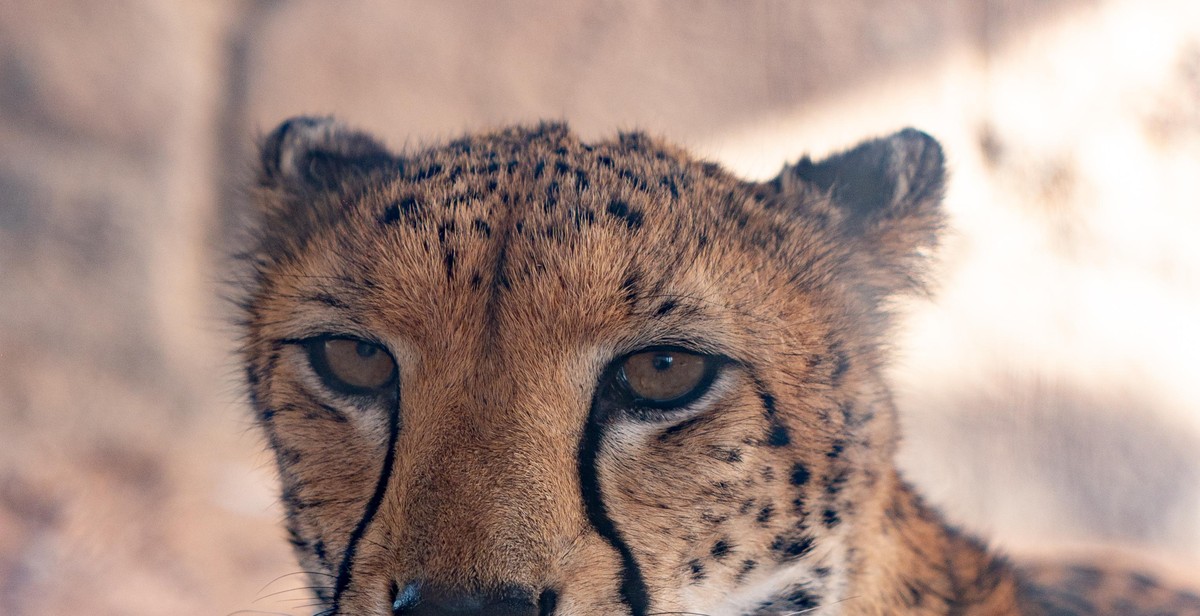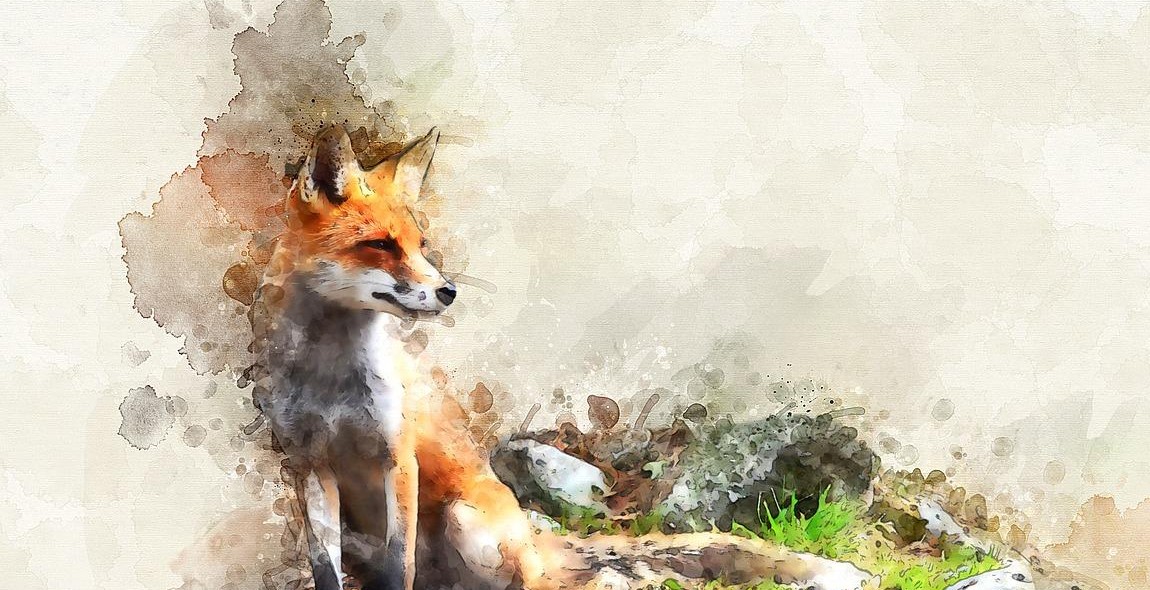How to Paint a Realistic Animal Portrait with Colored Pencil Blending
If you are an artist and love to create realistic portraits of animals, then you must try colored pencil blending. Colored pencils are a versatile medium that allows you to create stunning and realistic artwork. One of the best things about colored pencils is that they are easy to work with and provide excellent control, making them an ideal choice for painting animal portraits.
Why Paint Animal Portraits with Colored Pencil Blending?
Colored pencil blending is a technique that involves layering colors on top of each other to create a smooth and realistic appearance. This technique is perfect for creating animal portraits because it allows you to capture the fur, feathers, and other textures of the animal in a way that looks lifelike.
Another advantage of using colored pencils for animal portraits is that they are easy to blend and shade. You can create a range of shades and tones by blending different colors together, which gives your artwork depth and dimension.
Colored pencils are also a great choice for animal portraits because they are affordable and easy to find. You can purchase a set of colored pencils from any art supply store or online, and they come in a wide range of colors.
Overall, if you want to create stunning and realistic animal portraits, colored pencil blending is a technique that you should definitely try. With a little practice and patience, you can create artwork that captures the beauty and essence of the animal in a way that is truly breathtaking.
Materials Needed for Painting Realistic Animal Portrait with Colored Pencil Blending
Painting a realistic animal portrait with colored pencil blending requires specific materials. Here are the materials you need to paint a realistic animal portrait with colored pencil blending.
1. Colored Pencils
Choose high-quality colored pencils to create a realistic animal portrait. You can use Prismacolor Premier, Faber-Castell Polychromos, or Caran d’Ache Luminance colored pencils. These brands offer excellent color range, blendability, and durability.
2. Paper
The paper you use should be thick and durable to handle multiple layers of colored pencils. Choose a paper with a toothy surface to hold the pigment of the colored pencils. Strathmore Bristol Vellum, Stonehenge paper, and Canson Mi-Teintes paper are excellent choices for colored pencil artwork.
3. Blending Tools
Blending tools are essential for creating smooth and realistic blending in your colored pencil artwork. You can use a blending stump, tortillon, or paper towel to blend your colored pencils. Alternatively, you can use a colorless blender pencil to achieve a smooth blend.
Other materials you may need include:
- Eraser
- Sharpener
- Ruler
- Reference photo or sketch
| Materials | Brands |
|---|---|
| Colored pencils | Prismacolor Premier, Faber-Castell Polychromos, or Caran d’Ache Luminance |
| Paper | Strathmore Bristol Vellum, Stonehenge paper, and Canson Mi-Teintes paper |
| Blending Tools | Blending stump, tortillon, or paper towel |
With these materials, you are ready to create a beautiful and realistic animal portrait with colored pencil blending.
Preparing for the Portrait
Before you start your colored pencil blending journey, it’s essential to prepare for your artwork. Here are two critical steps to take before you start painting:
Choosing a Reference Photo
Choosing a reference photo is a crucial step in creating a realistic animal portrait. You need to find a photo that has a clear, high-resolution image of the animal you want to draw. Here are some tips to help you choose the perfect reference photo:
- Choose a photo with good lighting that shows the animal’s natural colors and texture.
- Make sure the photo has a clear focus on the animal’s face, especially the eyes. This will help you capture the animal’s expression and personality.
- Consider the animal’s pose and composition. Choose a pose that shows off the animal’s best features and fits your artistic vision.
- Take your time to browse through different photos until you find the perfect one. You can use online resources like Unsplash or Pinterest to find reference photos.
Sketching the Outline
Once you have chosen your reference photo, the next step is to sketch the outline of your animal portrait. This step is crucial because it helps you plan the composition and capture the animal’s proportions accurately. Here are some tips for sketching the outline:
- Use a light pencil to sketch the basic shapes and proportions of the animal. Start with the head and work your way down to the body.
- Focus on capturing the animal’s unique features, such as the shape of its ears, nose, and eyes.
- Check your proportions regularly to ensure that the animal’s body parts are in the correct size and position.
- Once you have the basic outline, you can start adding more details, such as fur or feathers.
- Remember that the outline doesn’t have to be perfect. It’s just a guide to help you create your artwork.
Blending Techniques
Blending is an essential part of creating a realistic animal portrait with colored pencils. It helps to smooth out any harsh lines and create a more natural transition between colors. There are several techniques you can use to blend your colors, including layering, burnishing, and solvent blending.
Layering Colors
Layering is the most basic form of blending. It involves applying multiple layers of different colors on top of each other to create a new shade. By layering colors, you can create depth and dimension in your artwork. To achieve the best results, start with lighter colors and gradually build up to darker shades. Use a light touch when applying each layer to avoid creating harsh lines.
Burnishing
Burnishing involves applying heavy pressure to the pencil to blend the colors together. It compresses the pigment and creates a smooth, shiny surface. Burnishing is particularly useful for creating smooth fur or feathers in an animal portrait. To burnish, use a colorless blender pencil or a white pencil. Apply heavy pressure to the area you want to blend until the colors are blended together evenly.
Solvent Blending
Solvent blending involves using a solvent such as turpentine, mineral spirits, or rubbing alcohol to dissolve the pigment and blend the colors together. It is the most effective way to blend colored pencils, but it can also be the most tricky. Solvent blending requires a bit of experimentation to get the right amount of solvent and the right paper. It is best to use a high-quality paper that can handle the solvent without bleeding or smudging.
| Technique | Pros | Cons |
|---|---|---|
| Layering | Easy to do, creates depth and dimension | Can create a grainy texture if too much pressure is used |
| Burnishing | Creates a smooth, shiny surface | Can flatten the texture of the paper, making it difficult to add more layers |
| Solvent Blending | Creates the most even and smooth blend | Requires experimentation to get the right amount of solvent and paper |
Experiment with all three blending techniques to see which one works best for your animal portrait. Remember to use a light touch when layering, heavy pressure when burnishing, and caution when using solvents. With practice, you will be able to create a realistic and stunning animal portrait with colored pencils.

Adding Details
Once you have blended your colors and created a base layer for your animal portrait, it’s time to start adding details. This is where your drawing will start to come to life and look more realistic. Here are some tips for adding details to different parts of your animal portrait:
Fur and Hair
- Use a sharp pencil to create fine, hair-like strokes for fur.
- Start with lighter colors and gradually build up to darker colors for a more realistic look.
- Pay attention to the direction of the fur and hair and use your strokes to mimic this direction.
- Use a blending tool to smooth out any harsh lines or edges.
Eyes and Nose
- For eyes, use a white pencil to create highlights and a dark pencil to create shadows.
- Add small details like catchlights and reflections to make the eyes look more alive.
- For the nose, use a dark pencil to create shadows and a white pencil to create highlights.
- Pay attention to the texture of the nose and use your strokes to mimic this texture.
Background
- Use a light color for the background to make your animal portrait stand out.
- Use a blending tool to create a smooth gradient from light to dark or from one color to another.
- Add small details like grass, leaves, or other elements to make the background more interesting.
- Use a reference photo or your imagination to create a background that complements your animal portrait.
| Tip: | It’s important to take breaks and step back from your drawing to see it with fresh eyes. This will help you identify areas that need more work or details that need to be added. |
|---|
With these tips, you can add details to your animal portrait that will make it look more realistic and lifelike. Keep practicing and experimenting with different techniques to find what works best for you.

Conclusion
Painting a realistic animal portrait with colored pencil blending can seem like a daunting task, but with practice and patience, anyone can achieve stunning results. By following the steps outlined in this article, you can create a beautiful piece of art that captures the essence of your favorite animal.
Practice Makes Perfect
One of the most important things to remember when learning how to paint with colored pencils is that practice makes perfect. Don’t be discouraged if your first attempts don’t turn out exactly as you want them to. Keep practicing, experimenting with different techniques, and learning from your mistakes.
As you continue to practice, you’ll start to develop your own style and techniques that work best for you. Don’t be afraid to try new things and push yourself outside of your comfort zone.
Resources for Further Learning
If you’re interested in learning more about colored pencil blending and painting realistic animal portraits, there are many resources available to you. Online tutorials, books, and classes can all provide valuable guidance and inspiration as you continue to develop your skills.
- Colored Pencil Classroom offers a variety of online courses and tutorials for artists of all skill levels.
- Drawing and Painting Animals: Problems and Solutions by Trudy Friend is a comprehensive guide to painting realistic animal portraits.
- This video tutorial by artist Jasmina Susak provides a step-by-step guide to painting a realistic dog portrait with colored pencils.
Final Thoughts
Painting a realistic animal portrait with colored pencil blending can be a challenging but rewarding experience. With patience, practice, and the right resources, you can create stunning works of art that capture the beauty and essence of your favorite animals.
